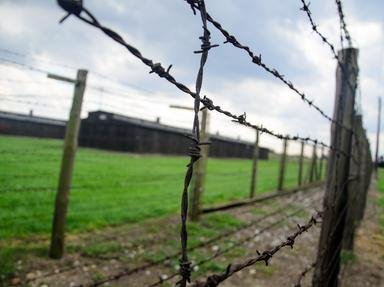Quiz Answer Key and Fun Facts
1. Established in October 1941, which was the first camp liberated by the Allies, in the summer of 1944?
2. Which camp was liquidated by the Nazis in October of 1943 after a prisoner revolt resulted in the death of 11 SS guards and the escape of over 300 inmates?
3. At which camp did the British troops who arrived on April 15, 1945 have to burn down the entire set of barracks to control a raging typhus epidemic?
4. Which camp's clock is stopped at 3:15, to mark the exact time it was liberated?
5. Which camp was the second-to-last to be liberated, on May 8, 1945, the day Germany officially surrendered?
6. Which camp, liberated by the French Army in 1944, was the only German-run Concentration Camp on French soil?
7. On May 5, 1945, this camp, notorious for its "Death Staircase", was liberated by the US Army.
8. The V-2 rockets were built at which camp, liberated on April 11, 1945 by the US 104th Infantry Division?
9. Which camp, abandoned by the Nazis on January 15, 1945, was shut down in 1943, then reopened in 1944 to accomodate the liquidation of the Lodz Ghetto?
10. Upon entering this camp on April 29, 1945, American soldiers were so disgusted by what they saw that they summarily executed several of the SS guards still there.
Source: Author
RangerOne
This quiz was reviewed by FunTrivia editor
bloomsby before going online.
Any errors found in FunTrivia content are routinely corrected through our feedback system.

